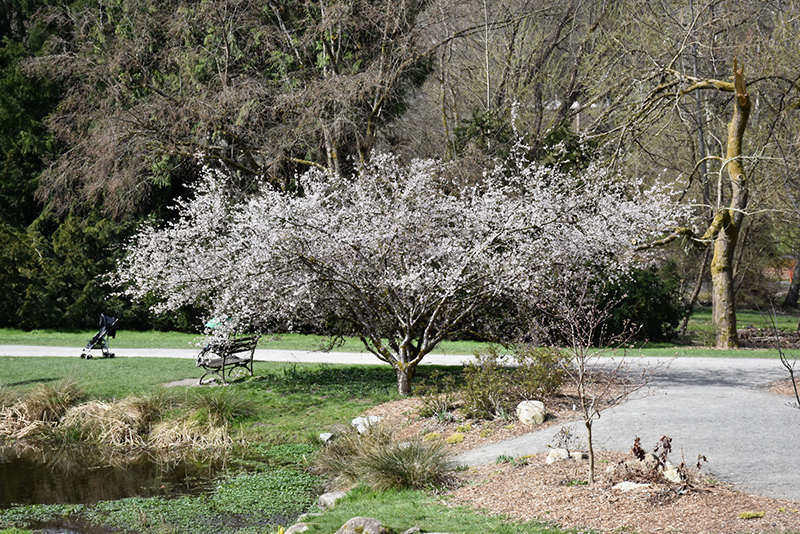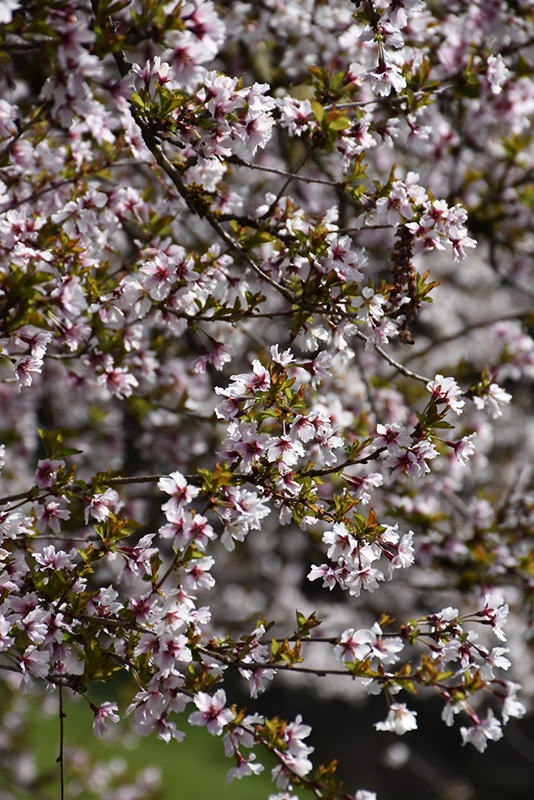Plant Search Tool
This is a 3rd party Knowledgebase and does not reflect actual stock
Height: 12 feet
Spread: 15 feet
Sunlight:
![]()
Hardiness Zone: 6b
Other Names: Japanese Cherry
Description:
A wonderfully charismatic flowering ornamental for the discerning gardener with delicious pinkish-white flowers in early spring that literally enshroud the shrub, an upright and gently spreading habit makes it a wonderful selection for the landscape
Ornamental Features
Fuji Cherry is bathed in stunning clusters of lightly-scented white bell-shaped flowers with shell pink overtones along the branches in early spring, which emerge from distinctive crimson flower buds before the leaves. It has green deciduous foliage which emerges coppery-bronze in spring. The pointy leaves turn an outstanding red in the fall. The smooth dark red bark adds an interesting dimension to the landscape.
Landscape Attributes
Fuji Cherry is a multi-stemmed deciduous shrub with an upright spreading habit of growth. Its average texture blends into the landscape, but can be balanced by one or two finer or coarser trees or shrubs for an effective composition.
This shrub will require occasional maintenance and upkeep, and is best pruned in late winter once the threat of extreme cold has passed. Gardeners should be aware of the following characteristic(s) that may warrant special consideration;
- Disease
Fuji Cherry is recommended for the following landscape applications;
- Accent
- Mass Planting
- General Garden Use
Planting & Growing
Fuji Cherry will grow to be about 12 feet tall at maturity, with a spread of 15 feet. It has a low canopy with a typical clearance of 1 foot from the ground, and is suitable for planting under power lines. It grows at a slow rate, and under ideal conditions can be expected to live for 50 years or more.
This shrub should only be grown in full sunlight. It does best in average to evenly moist conditions, but will not tolerate standing water. It is not particular as to soil pH, but grows best in rich soils. It is highly tolerant of urban pollution and will even thrive in inner city environments, and will benefit from being planted in a relatively sheltered location. This species is not originally from North America.







